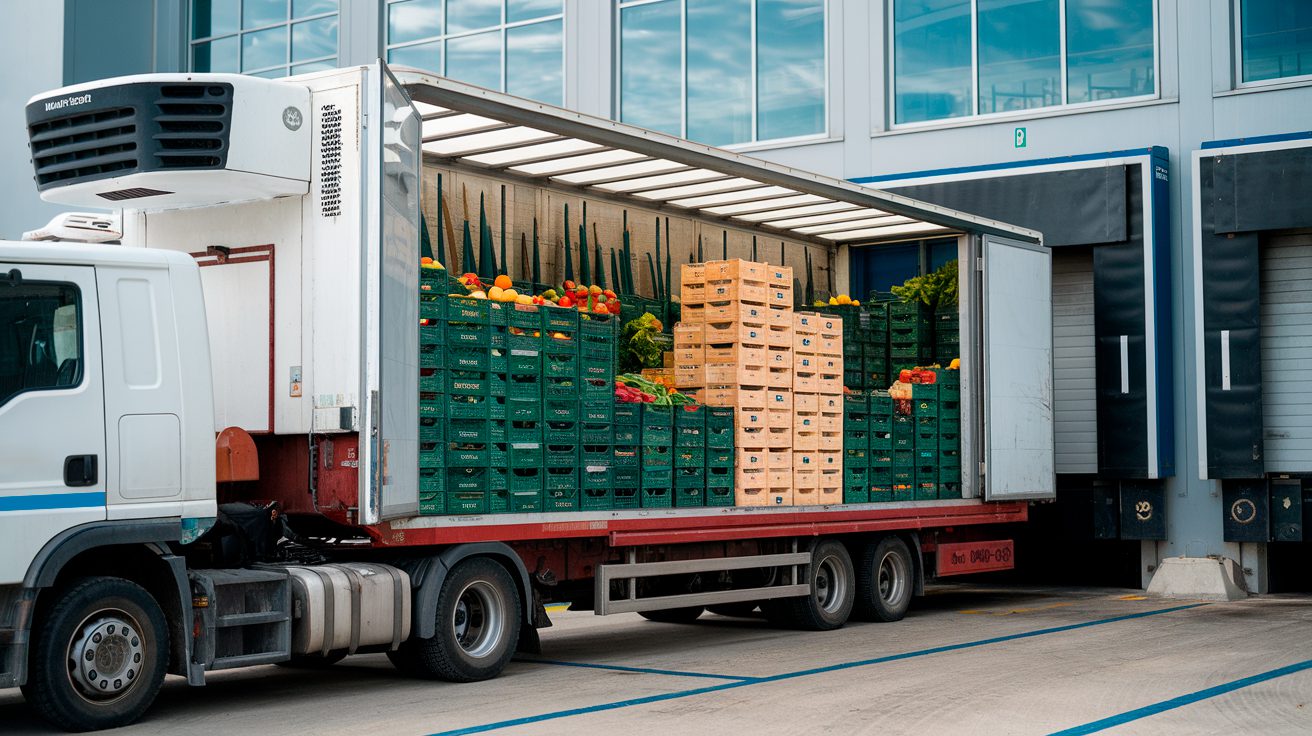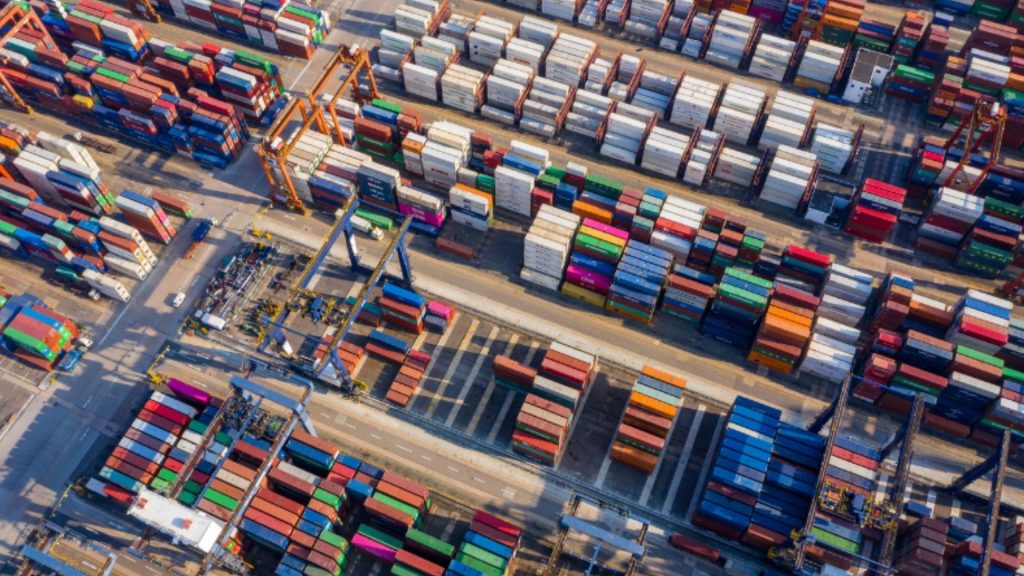How to Transport Perishable Goods to the Port Without Spoiling?

When transporting perishable goods, the importance of preserving freshness and quality is paramount. From fruits and vegetables to dairy products and seafood, these items have a limited shelf life and require special handling to ensure they arrive at their destination in optimal condition. This guide will explore the key strategies and practices needed to transport perishable goods to the port without spoiling, including the best methods for temperature control, packaging, and efficient logistics.
Understanding the Importance of Temperature Control in Perishable Transport
Perishable goods are highly sensitive to changes in temperature. Whether it’s fresh produce, frozen meats, or pharmaceuticals, maintaining a consistent, optimal temperature during transport is crucial to preventing spoilage. For example, the ideal temperature for transporting fresh vegetables is typically between 32°F and 40°F, while frozen foods need to be stored at 0°F or lower.
Utilizing temperature-controlled vehicles like refrigerated trucks or containers, also known as “reefers,” is essential. These vehicles are equipped with cooling systems that allow for precise temperature regulation throughout the entire journey. Monitoring systems can also be installed to track temperature fluctuations and ensure that conditions remain stable.
Selecting the Right Packaging for Perishable Goods
Packaging plays a significant role in ensuring perishable goods remain fresh during transit. Using the appropriate packaging materials helps insulate the products from external temperature changes and physical damage.
For instance, insulated containers, thermal blankets, and gel packs are often used to maintain cold temperatures for fresh and frozen products. Vacuum-sealed packaging is another common method, as it prevents air exposure and reduces the growth of bacteria.
Furthermore, the packaging should be durable enough to withstand potential shocks or vibrations that occur during transportation. Damaged packaging can lead to contamination or spoilage, so investing in high-quality materials is a must.
Planning Efficient Logistics for Perishable Goods
Time is a critical factor when transporting perishable goods. Delays in transit can quickly lead to spoilage, so efficient logistics planning is essential. This includes selecting the fastest route to the port, scheduling deliveries to avoid traffic congestion, and ensuring that all necessary permits and documentation are ready in advance.
It’s also important to choose a reliable transportation provider with experience in handling perishable goods. Companies specializing in cold chain logistics understand the unique requirements of temperature-sensitive products and are better equipped to manage unexpected challenges, such as traffic delays or equipment failures.
Monitoring and Tracking During Transit
One of the most effective ways to prevent spoilage is by utilizing real-time monitoring and tracking systems. These technologies allow for continuous oversight of temperature conditions, humidity levels, and other critical factors during the journey.
GPS tracking can provide updates on the location of the shipment, ensuring that any potential delays can be addressed promptly. In addition, some advanced monitoring systems offer alerts if the temperature deviates from the required range, allowing corrective actions to be taken immediately.

Regulatory Compliance and Best Practices
Transporting perishable goods, especially across international borders, requires compliance with various regulations and standards. The Food Safety Modernization Act (FSMA) in the U.S. mandates that all carriers, shippers, and receivers handling perishable goods follow strict sanitary transportation procedures to prevent contamination.
Adhering to these regulations not only ensures the safety of the goods but also helps prevent costly delays at the port due to non-compliance. Best practices include thoroughly cleaning and sanitizing transport containers and regularly inspecting cooling equipment to ensure it’s functioning correctly.
Choosing the Best Shipping Method for Perishable Goods
There are several shipping options available for transporting perishable goods, each with its advantages and disadvantages. Air freight is the fastest option, making it ideal for high-value or time-sensitive goods. However, it can be costly and may not always be feasible for larger shipments.
On the other hand, sea freight is more economical and can handle larger volumes, but it’s slower. To prevent spoilage during long sea voyages, it’s crucial to use temperature-controlled containers and monitor conditions closely throughout the journey.
Using Data Analytics to Improve Perishable Goods Transport
Data analytics can play a significant role in optimizing the transportation of perishable goods. By analyzing past shipments, companies can identify trends such as peak traffic times, the most reliable carriers, and potential points of failure in the cold chain.
This data-driven approach helps to make informed decisions and minimize risks. For example, predictive analytics can forecast potential delays due to weather or port congestion, allowing for proactive adjustments to the shipping schedule.
Sustainable Practices in Perishable Goods Transport
With growing concerns about environmental impact, many companies are adopting more sustainable practices in the transportation of perishable goods. This includes using energy-efficient vehicles, reducing packaging waste, and optimizing delivery routes to minimize fuel consumption.
Investing in renewable energy-powered refrigeration units and biodegradable packaging materials are other ways businesses can reduce their carbon footprint while ensuring the safe delivery of perishable goods.
Common Challenges in Perishable Goods Transport
Transporting perishable goods comes with a unique set of challenges. Unforeseen delays, such as traffic jams or port congestion, can lead to extended transit times, increasing the risk of spoilage. Equipment malfunctions, such as refrigeration unit failures, can also compromise the temperature-sensitive nature of the cargo.
Weather conditions, especially extreme heat or cold, can further complicate transport. Proper contingency planning and using reliable, well-maintained equipment can mitigate many of these risks.
How to Prevent Spoilage During Transportation
Preventing spoilage starts with thorough planning and execution. Here are a few key strategies to keep in mind:
- Pre-cool products: Before loading perishable goods into a refrigerated truck, ensure they are pre-cooled to the appropriate temperature. This helps maintain a consistent temperature during transit.
- Regular maintenance of refrigeration units: Malfunctions in cooling systems can cause goods to spoil quickly. Regular maintenance and checks are essential to ensure the equipment works properly.
- Ensure proper airflow: When loading goods, avoid overpacking, as this can restrict airflow and lead to uneven cooling.
- Use backup power: In the event of a power failure, having a backup power source for refrigeration units can prevent temperature fluctuations.
How to Transport Perishable Goods to the Port Without Spoiling
Transporting perishable goods to the port without spoilage requires meticulous planning and the right resources. The key steps include maintaining a cold chain, selecting the proper packaging, monitoring conditions in real-time, and choosing the fastest, most reliable shipping method. With these practices in place, businesses can ensure that their products arrive at the port fresh and ready for export, minimizing the risk of losses.
Conclusion
Transporting perishable goods to the port without spoiling requires careful attention to temperature control, efficient logistics, and regulatory compliance. By utilizing modern technology such as real-time monitoring and selecting the best shipping methods, businesses can preserve the quality of their products throughout the journey. Effective planning, combined with sustainable practices, will not only prevent spoilage but also reduce environmental impact, making it a win-win situation for both businesses and consumers.
Centrally Located Cold Storage Solutions
Interested in learning about how our cold storage facilities can help your business? Reach out to our team today!

Get in touch with us today to learn more about how Evo Logistics’ climate controlled storage facilities can help your business thrive in the frozen storage logistics industry.
Our team understands the importance of being committed to ensuring the quality of our customer’s product is at its best throughout the shipping process. Our dedicated staff are trained to monitor and operate around the clock 24 hours a day, 365 days a year. With a focus on fast and timely delivery along with GPS tracking, we work to provide consistent satisfaction to our customers.




